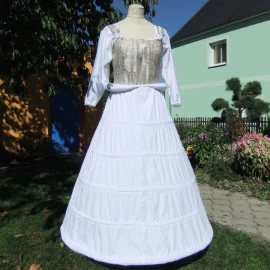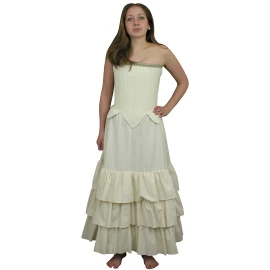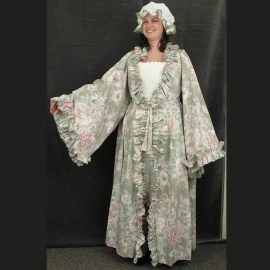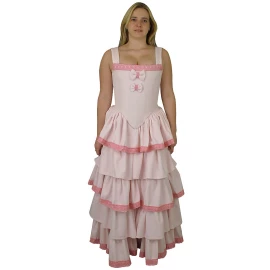Historical undegarment
Filter products
Historical undegarment
Over the upper part of their bodies, both medieval men and women usually wore a close-fitting shirt-like garment called a chemise in France, or a smock or shift in England. The forerunner of the modern-day shirt, the chemise was tucked into a man's braies (loose, trouser-like clothing), under his outer clothing. Women wore as their undergarment a chemise underneath their gowns or robes, sometimes with petticoats over the chemise. Elaborately quilted petticoats might be displayed by a cut-away dress, in which case they served a skirt rather than an undergarment. During the 16th century, the farthingale (crinoline) was popular. This was a petticoat stiffened with reed or willow rods so that it stood out from a woman's body like a cone extending from the waist.





